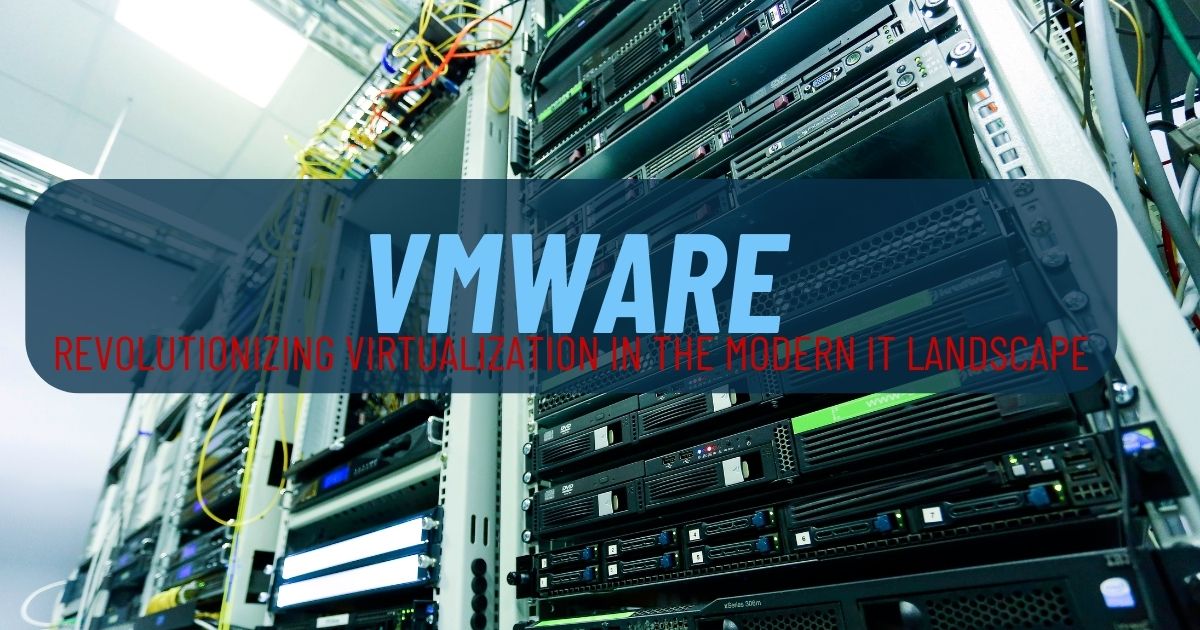In the dynamic world of information technology, the ability to adapt and innovate is paramount. VMware, a global leader in virtualization and cloud computing, has been at the forefront of transforming IT infrastructure. In this blog post, we explore how VMware has revolutionized virtualization and why it remains a driving force in the modern IT landscape.
The Foundation of Virtualization
Before delving into VMware’s impact, let’s clarify the concept of virtualization. Virtualization involves creating a virtual version of computing resources, such as servers, storage, and networks. This technology enables multiple operating systems and applications to run on a single physical machine, optimizing resource utilization and enhancing flexibility.
VMware’s Pioneering Role
Founded in 1998, VMware played a pioneering role in popularizing virtualization. Their breakthrough technology, VMware vSphere, allowed data centers to consolidate servers, reduce hardware costs, and improve disaster recovery capabilities. This marked the beginning of a virtualization revolution that reshaped IT infrastructures worldwide.
Key Contributions of VMware
- Server Virtualization: VMware’s server virtualization solutions, notably VMware vSphere, transformed data center operations. By running multiple virtual machines (VMs) on a single physical server, companies could optimize hardware utilization and reduce the need for sprawling server rooms.
- Desktop Virtualization: VMware Horizon offers desktop virtualization solutions, allowing organizations to deliver secure and flexible virtual desktops to end-users. This technology streamlines desktop management, enhances security, and provides remote access to critical applications.
- Hybrid and Multi-Cloud: VMware’s cloud solutions enable seamless integration between on-premises data centers and public cloud services. VMware Cloud on AWS, for instance, allows organizations to extend their data center to the cloud, providing scalability and disaster recovery options.
- Security and Compliance: VMware’s security solutions enhance data protection and compliance. VMware NSX-T, a network virtualization and security platform, offers micro-segmentation capabilities to protect against cyber threats.
VMware in the Modern IT Landscape
In the contemporary IT landscape, VMware remains indispensable. Here’s why:
- Hybrid Cloud Adoption: As organizations increasingly adopt hybrid and multi-cloud strategies, VMware’s solutions provide the necessary bridge between on-premises infrastructure and the cloud, ensuring a consistent and secure computing environment.
- Enhanced Security: With the rise of cyber threats, VMware’s focus on security and compliance helps organizations safeguard their data and infrastructure in an ever-changing threat landscape.
- Agility and Scalability: VMware’s virtualization solutions enable organizations to scale resources up or down as needed, ensuring agility in response to changing business demands.
- Cost Optimization: Virtualization helps organizations optimize hardware and reduce data center costs, making it an attractive choice for businesses aiming to improve their bottom line.
The Future of VMware
VMware’s commitment to innovation continues unabated. The company is venturing into edge computing, artificial intelligence, and containerization, ensuring its relevance in emerging technology trends.
In conclusion, VMware’s journey from a pioneer in virtualization to a key player in cloud computing and digital transformation underscores its enduring significance in the IT world. As businesses evolve, VMware’s solutions remain pivotal in enabling organizations to build resilient, agile, and secure IT infrastructures.
In the ever-evolving IT landscape, VMware stands as a testament to the power of innovation and adaptability, shaping the future of virtualization and cloud computing.
you can find more details on Vmware website for Vmware relate contents check out cloud fusion blogs

